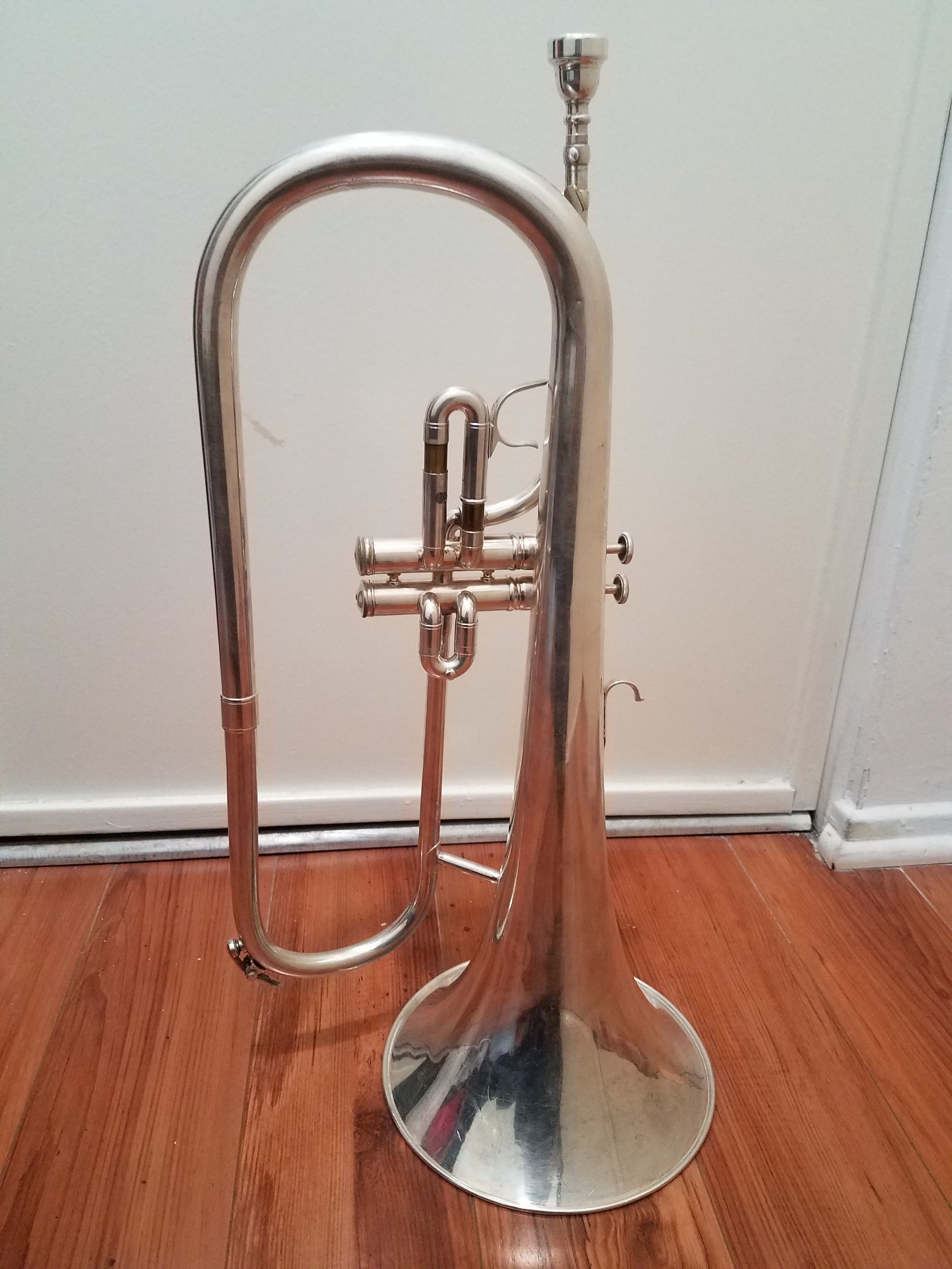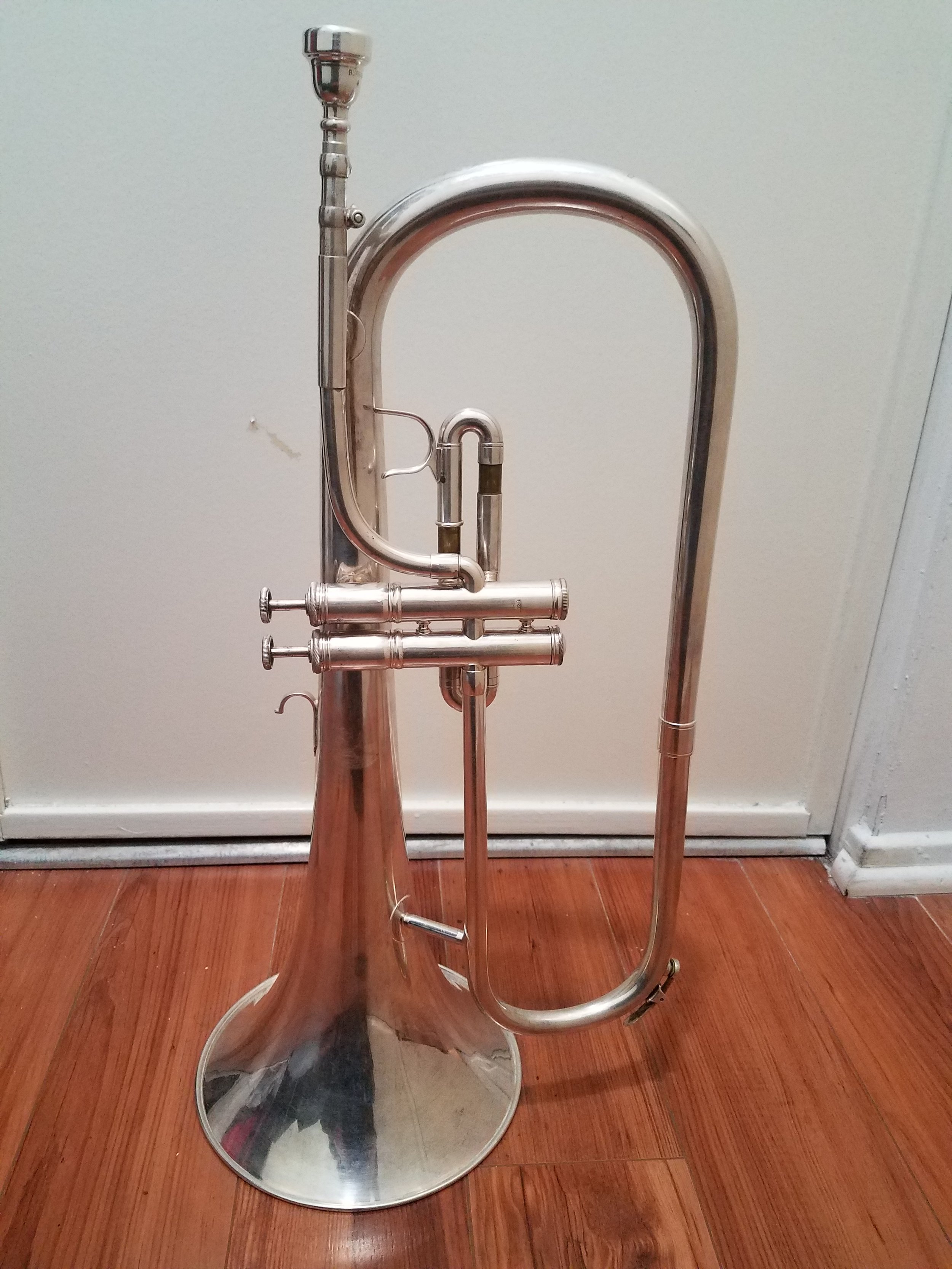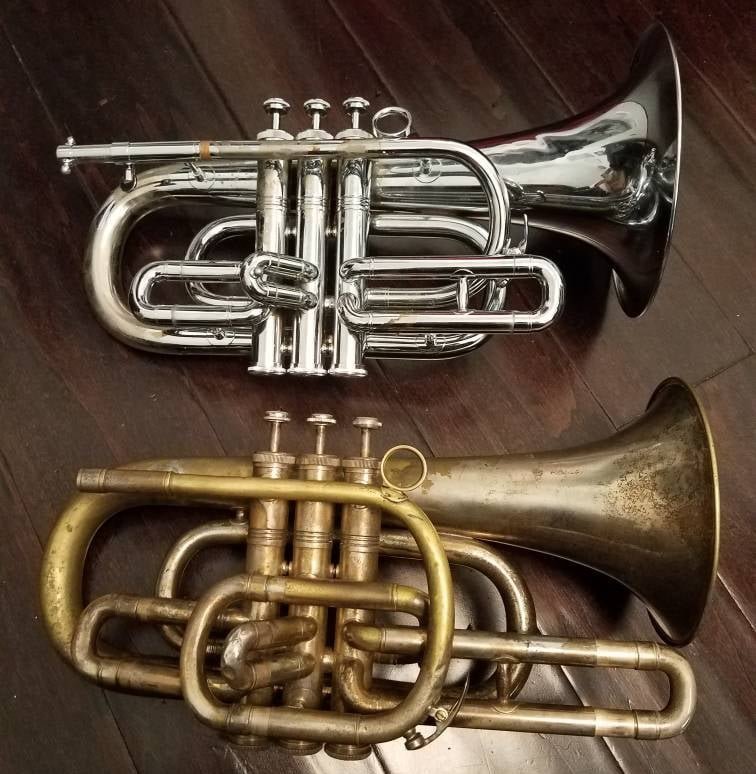Nirschl Mellophone
You’d be forgiven if you didn’t know that Nirschl, the esteemed German brass instrument manufacturer responsible for lots of enormous 6/4 CC tubas, once sold a marching mellophone. There is very little record of the instrument on the Internet; its entire presence consists of a Middle Horn Leader review, a discussion in episode 73 of the MelloCast podcast, an old Reverb listing, and a couple of derelict shells of online store pages for the instrument from over a decade ago (listed price was $899!).
The instrument is called the E-102 (E-102SP in silver plate), and while it was not actually built by Walter Nirschl, it is still an intriguing nstrument. Even among mellophone enthusiasts this instrument is usually forgotten, if it was ever known about to begin with. It might as well not exist…right?
Nirschl E-102SP
Well, I suspect the primary reason it gets forgotten as a mellophone is because it’s not very good at being one. In fact, it’s so bad at being a mellophone that I think it being marketed as one was a mistake. The reason for this deficiency is the bell; one of the mellophone’s defining features both visually and sonically is the massive 10” or larger bell. Nirschl decided to skip this feature entirely, instead giving it a relatively small 8” bell. In a way, this makes it somewhat of a poor man’s alto flugelhorn, or an alto bugle pitched in F.
So, how does it work as an alto flugelhorn? The answer is, unfortunately, not very well. Using the mouthpiece from an alto horn or alto trumpet results in a woefully flat instrument - with a Denis Wick, the instrument is so flat it’s almost down a whole step to E-natural (but not quite low enough that you can actually use it that way). This is a problem shared with the Kanstul KAH-175 alto bugle in G, though that instrument is of much better quality. The Kanstul, at least, is in tune when you use a marching mellophone mouthpiece like a Benge Mello 6, which is what it was designed for. The same cannot be said of the Nirschl E-102, as even with the shallowest marching mellophone mouthpiece it still plays flat with the main tuning slide all the way in!
Weirdly, the mouthpieces I found to work best with the Nirschl don’t even have the right shank: a French horn mouthpiece and an antique Conn circular mellophone mouthpiece. Despite not seating in the Nirschl’s mouthpiece receiver at all, they gave the best sound and intonation out of all the mouthpieces I had, and I gave its new owner the old Conn mouthpiece when I sold it. That mouthpiece never worked well in any of my circular mellophones!
I can see now why the Nirschl E-102 never took off. In its factory state, it is thruthfully as useless as the Getzen frumpet, and bears the odd distinction of being the only marching mellophone (or mellophone-adjacent object) I know of that actually works better with a horn mouthpiece. With marching mellophone or alto horn mouthpieces, your only real option is to get the horn lengthened to E-flat, as the main tuning slide has no room to shorten up to pitch with those mouthpieces.















